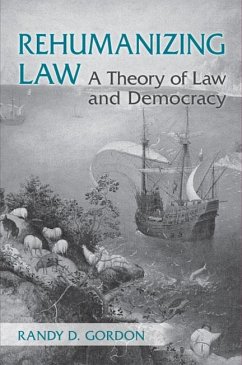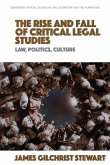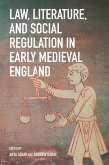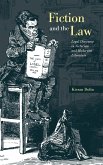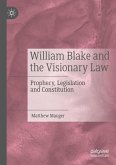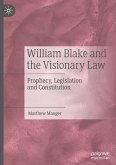- Gebundenes Buch
- Merkliste
- Auf die Merkliste
- Bewerten Bewerten
- Teilen
- Produkt teilen
- Produkterinnerung
- Produkterinnerung
This highly original and creative study reconnects the law to its narrative roots by showing how and why stories become laws.
Andere Kunden interessierten sich auch für
![A Culture of Rights A Culture of Rights]() Benjamin James AuthersA Culture of Rights79,99 €
Benjamin James AuthersA Culture of Rights79,99 €![The Rise and Fall of Critical Legal Studies The Rise and Fall of Critical Legal Studies]() James Gilchrist StewartThe Rise and Fall of Critical Legal Studies111,99 €
James Gilchrist StewartThe Rise and Fall of Critical Legal Studies111,99 €![Law, Literature, and Social Regulation in Early Medieval England Law, Literature, and Social Regulation in Early Medieval England]() Law, Literature, and Social Regulation in Early Medieval England142,99 €
Law, Literature, and Social Regulation in Early Medieval England142,99 €![Fiction and the Law Fiction and the Law]() Kieran DolinFiction and the Law63,99 €
Kieran DolinFiction and the Law63,99 €![Living in Technical Legality Living in Technical Legality]() Kieran TranterLiving in Technical Legality160,99 €
Kieran TranterLiving in Technical Legality160,99 €![William Blake and the Visionary Law William Blake and the Visionary Law]() Matthew MaugerWilliam Blake and the Visionary Law82,99 €
Matthew MaugerWilliam Blake and the Visionary Law82,99 €![William Blake and the Visionary Law William Blake and the Visionary Law]() Matthew MaugerWilliam Blake and the Visionary Law82,99 €
Matthew MaugerWilliam Blake and the Visionary Law82,99 €-
-
-
This highly original and creative study reconnects the law to its narrative roots by showing how and why stories become laws.
Hinweis: Dieser Artikel kann nur an eine deutsche Lieferadresse ausgeliefert werden.
Hinweis: Dieser Artikel kann nur an eine deutsche Lieferadresse ausgeliefert werden.
Produktdetails
- Produktdetails
- Verlag: University of Toronto Press
- Seitenzahl: 240
- Erscheinungstermin: 15. April 2011
- Englisch
- Abmessung: 234mm x 160mm x 28mm
- Gewicht: 612g
- ISBN-13: 9781442642294
- ISBN-10: 1442642297
- Artikelnr.: 30585012
- Herstellerkennzeichnung
- Libri GmbH
- Europaallee 1
- 36244 Bad Hersfeld
- gpsr@libri.de
- Verlag: University of Toronto Press
- Seitenzahl: 240
- Erscheinungstermin: 15. April 2011
- Englisch
- Abmessung: 234mm x 160mm x 28mm
- Gewicht: 612g
- ISBN-13: 9781442642294
- ISBN-10: 1442642297
- Artikelnr.: 30585012
- Herstellerkennzeichnung
- Libri GmbH
- Europaallee 1
- 36244 Bad Hersfeld
- gpsr@libri.de
Randy D. Gordon is an adjunct professor in the Dedman School of Law and a lecturer in English at Southern Methodist University. He is a partner in the Complex Litigation Group of Gardere Wynne Sewell LLP.
Introduction
PART I: Law and Narrative: Reexamining the Relationship
1. Describing Law in Terms of Autonomy
2. Narrative as the Basis of Law and the Humanities
3. Shelley’s Case, Part 1: Law of The Jungle
4. Shelley’s Case, Part 2: Silent Spring
5. Law, Literature, and Narrative
6. What is Narrative?
7. How Narratives Interact to Influence Legislation
8. Text in Context
9. What’s Truth Have to Do with It?
10. Whose Story to Believe?
PART II: Institutionalizing Narratives
1. Narrative and the Normative Syllogism
2. The Narrative Nudge
3. When Narratives Clash
4. Changes in Narrative, Changes in Law
5. Law’s Constraints: Genetic or Precedential?
6. Novelizing Law
7. Resisting Narratives: Keeping the Outside Out
8. Absorbing Narratives: Letting the Outside In
9. What Law Can Learn from Literature (and History)
PART III: Law, Narrative, and Democracy
1. The Rule of Law and Its Limits
2. Toward a Democratic Rule of Law
3. The Jury as a Structural Safeguard of Democracy
4. The Democratic Role of Interpretive Communities
5. A Study in Contrasts: The Rodney King and O.J. Simpson Juries
6. Is Jury Nullification Democratic and Within the Rule of Law?
7. Some Thoughts on Democratic Interpretation
PART IV: Narrative as Democratic Reasoning
1. The Narrative Shape of Deliberation
2. Law-as-Discipline
3. The Problem with Appellate Practice and Appellate Opinions
4. (Re)Introducing Narratives in the Classroom
5. Democratic Education, Private Reason, and the Law
A Conclusion of Sorts
Notes
Bibliography
Index
PART I: Law and Narrative: Reexamining the Relationship
1. Describing Law in Terms of Autonomy
2. Narrative as the Basis of Law and the Humanities
3. Shelley’s Case, Part 1: Law of The Jungle
4. Shelley’s Case, Part 2: Silent Spring
5. Law, Literature, and Narrative
6. What is Narrative?
7. How Narratives Interact to Influence Legislation
8. Text in Context
9. What’s Truth Have to Do with It?
10. Whose Story to Believe?
PART II: Institutionalizing Narratives
1. Narrative and the Normative Syllogism
2. The Narrative Nudge
3. When Narratives Clash
4. Changes in Narrative, Changes in Law
5. Law’s Constraints: Genetic or Precedential?
6. Novelizing Law
7. Resisting Narratives: Keeping the Outside Out
8. Absorbing Narratives: Letting the Outside In
9. What Law Can Learn from Literature (and History)
PART III: Law, Narrative, and Democracy
1. The Rule of Law and Its Limits
2. Toward a Democratic Rule of Law
3. The Jury as a Structural Safeguard of Democracy
4. The Democratic Role of Interpretive Communities
5. A Study in Contrasts: The Rodney King and O.J. Simpson Juries
6. Is Jury Nullification Democratic and Within the Rule of Law?
7. Some Thoughts on Democratic Interpretation
PART IV: Narrative as Democratic Reasoning
1. The Narrative Shape of Deliberation
2. Law-as-Discipline
3. The Problem with Appellate Practice and Appellate Opinions
4. (Re)Introducing Narratives in the Classroom
5. Democratic Education, Private Reason, and the Law
A Conclusion of Sorts
Notes
Bibliography
Index
Introduction
PART I: Law and Narrative: Reexamining the Relationship
1. Describing Law in Terms of Autonomy
2. Narrative as the Basis of Law and the Humanities
3. Shelley’s Case, Part 1: Law of The Jungle
4. Shelley’s Case, Part 2: Silent Spring
5. Law, Literature, and Narrative
6. What is Narrative?
7. How Narratives Interact to Influence Legislation
8. Text in Context
9. What’s Truth Have to Do with It?
10. Whose Story to Believe?
PART II: Institutionalizing Narratives
1. Narrative and the Normative Syllogism
2. The Narrative Nudge
3. When Narratives Clash
4. Changes in Narrative, Changes in Law
5. Law’s Constraints: Genetic or Precedential?
6. Novelizing Law
7. Resisting Narratives: Keeping the Outside Out
8. Absorbing Narratives: Letting the Outside In
9. What Law Can Learn from Literature (and History)
PART III: Law, Narrative, and Democracy
1. The Rule of Law and Its Limits
2. Toward a Democratic Rule of Law
3. The Jury as a Structural Safeguard of Democracy
4. The Democratic Role of Interpretive Communities
5. A Study in Contrasts: The Rodney King and O.J. Simpson Juries
6. Is Jury Nullification Democratic and Within the Rule of Law?
7. Some Thoughts on Democratic Interpretation
PART IV: Narrative as Democratic Reasoning
1. The Narrative Shape of Deliberation
2. Law-as-Discipline
3. The Problem with Appellate Practice and Appellate Opinions
4. (Re)Introducing Narratives in the Classroom
5. Democratic Education, Private Reason, and the Law
A Conclusion of Sorts
Notes
Bibliography
Index
PART I: Law and Narrative: Reexamining the Relationship
1. Describing Law in Terms of Autonomy
2. Narrative as the Basis of Law and the Humanities
3. Shelley’s Case, Part 1: Law of The Jungle
4. Shelley’s Case, Part 2: Silent Spring
5. Law, Literature, and Narrative
6. What is Narrative?
7. How Narratives Interact to Influence Legislation
8. Text in Context
9. What’s Truth Have to Do with It?
10. Whose Story to Believe?
PART II: Institutionalizing Narratives
1. Narrative and the Normative Syllogism
2. The Narrative Nudge
3. When Narratives Clash
4. Changes in Narrative, Changes in Law
5. Law’s Constraints: Genetic or Precedential?
6. Novelizing Law
7. Resisting Narratives: Keeping the Outside Out
8. Absorbing Narratives: Letting the Outside In
9. What Law Can Learn from Literature (and History)
PART III: Law, Narrative, and Democracy
1. The Rule of Law and Its Limits
2. Toward a Democratic Rule of Law
3. The Jury as a Structural Safeguard of Democracy
4. The Democratic Role of Interpretive Communities
5. A Study in Contrasts: The Rodney King and O.J. Simpson Juries
6. Is Jury Nullification Democratic and Within the Rule of Law?
7. Some Thoughts on Democratic Interpretation
PART IV: Narrative as Democratic Reasoning
1. The Narrative Shape of Deliberation
2. Law-as-Discipline
3. The Problem with Appellate Practice and Appellate Opinions
4. (Re)Introducing Narratives in the Classroom
5. Democratic Education, Private Reason, and the Law
A Conclusion of Sorts
Notes
Bibliography
Index

